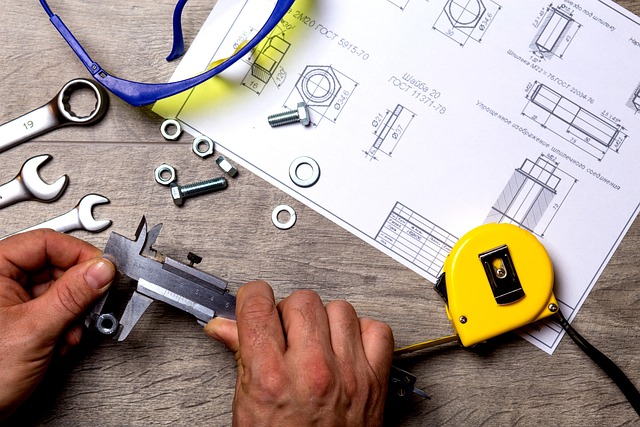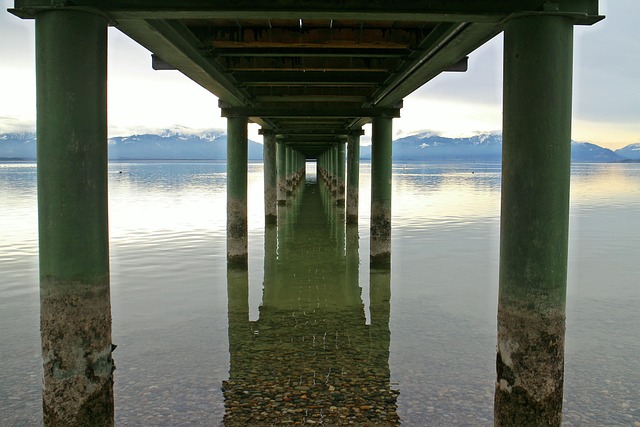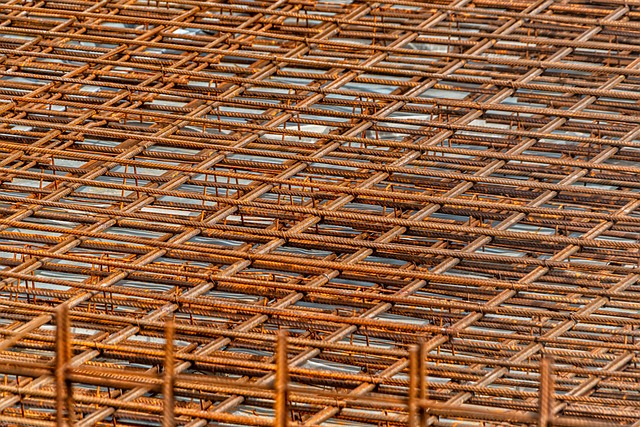Pier and beam foundations, renowned for their resilience, feature vertical support posts connected by horizontal beams, offering flexibility in challenging terrains. Over time, they can settle, shift, or sustain damage from poor soil, moisture, or natural disasters. Waterproofing challenges include cracks, leaks, and mold growth, necessitating regular inspections and maintenance. Early detection of issues like concrete cracks or signs of settling allows for informed decisions on repair work. Effective waterproofing methods involve identifying leak sources, sealing cracks, replacing rotted wood, and reinforcing concrete with high-quality, moisture-resistant materials. Choosing professional help ensures accurate assessments, tailored solutions, and effective sealing against moisture intrusion. Regular maintenance, including inspections and addressing wear, cracks, or moisture signs, extends the foundation's lifespan and prevents costly repairs.
“In many regions, pier and beam foundations are a common structural choice, offering both stability and adaptability. However, proper waterproofing is crucial for their longevity, protecting against moisture-related damage that can lead to costly repairs. This article delves into the intricacies of pier foundation waterproofing, addressing key aspects like understanding the foundation type, identifying issues, repair methods, material selection, DIY vs professional assistance, and maintenance tips. By exploring these elements, homeowners can effectively preserve their pier and beam foundations, ensuring a solid investment for years to come.”
Understanding Pier and Beam Foundations: A Basic Overview

Pier and beam foundations, also known as post-and-beam foundations, are a traditional building technique used in many parts of the world. This system consists of vertical support posts (or piers) connected by horizontal beams, creating a sturdy framework for structures, especially in areas prone to seismic activity or high water tables. The design allows for flexibility and adaptation to various terrain conditions, making it a popular choice for residential and commercial buildings.
Understanding this foundation type is crucial when considering Pier and Beam Foundation Repair. Over time, these structures can settle, shift, or experience damage due to factors like poor soil conditions, excessive moisture, or natural disasters. Identifying potential issues early on, such as cracks in beams or piers, uneven floors, or visible gaps, allows for prompt repair and preservation of the building’s structural integrity.
Common Issues with Pier Foundation Waterproofing

Pier and beam foundations, while popular for their versatility and aesthetics, are prone to specific waterproofing issues over time. One of the most common problems is the development of cracks in the foundation walls, which can be caused by shifting soil, improper construction, or changes in moisture levels. These cracks not only compromise the structural integrity but also create entry points for water, leading to potential damage and mold growth within the structure.
Another prevalent issue is the failure of waterproof membranes or barriers installed during construction. Over time, these materials can degrade due to exposure to UV radiation, extreme temperatures, or continuous moisture, resulting in leaks and seepage. This problem often goes unnoticed until significant water damage occurs, highlighting the importance of regular Pier and Beam Foundation Repair inspections and maintenance to ensure long-term waterproofing effectiveness.
Inspection: Identifying Signs of Water Damage and Leaks

When it comes to pier and beam foundation waterproofing, a thorough inspection is paramount. Homeowners should be vigilant for any signs of water damage or leaks, as these could indicate weaknesses in the foundation’s protective barrier. Common indicators include discolored walls, bubbling paint, visible mold growth, musty odors, and warped floors. Regularly checking these areas can help catch potential issues early on, preventing more severe and costly repairs related to pier and beam foundation repair.
Inspecting your foundation regularly also allows you to assess the overall condition of the structure. Look for cracks in the concrete, erosion around piers, or any signs of settling. These observations provide valuable insights into the effectiveness of current waterproofing measures and help guide decisions on necessary Pier and Beam Foundation Repair work.
Repair Methods for Effective Pier Foundation Waterproofing

When it comes to pier and beam foundation waterproofing, repair methods are a crucial aspect in ensuring long-term protection. The first step involves identifying the source of any leaks or moisture intrusion. This could be caused by damaged or cracked beams, deteriorated concrete, or improper drainage around the structure. Once located, repairs should address these issues immediately to prevent further damage.
Repairs can range from simple fixes like sealing cracks and gaps with waterproof sealant, to more extensive work such as replacing rotted wood or reinforcing weak concrete. For pier and beam foundations, it’s essential to use high-quality materials that are resistant to moisture and pests. Proper drainage systems should also be installed to direct water away from the foundation, reducing the risk of leaks and ensuring the longevity of the waterproofing system.
Choosing the Right Materials for Long-Lasting Protection

When it comes to pier and beam foundation repair, selecting the appropriate materials is a key step in ensuring long-lasting waterproofing. The right choice can provide an effective barrier against moisture intrusion, which is vital for preserving the structural integrity of these foundations. Look for high-quality, durable materials that are designed specifically for this purpose, such as advanced polymeric membranes or bitumen-based coatings. These products offer superior resistance to water penetration and can withstand the constant exposure typically found in outdoor environments.
Each material has unique properties, so understanding their advantages is essential. Polymeric membranes, for instance, provide a flexible yet robust barrier that can accommodate the slight movements of the foundation without tearing or cracking. Bitumen coatings, on the other hand, offer excellent adhesion and a more traditional approach to waterproofing, making them suitable for various surface conditions. Choosing materials tailored to the specific needs of pier and beam foundations will contribute to a successful long-term repair solution.
Professional vs DIY: When to Seek Expert Assistance

When it comes to waterproofing a pier and beam foundation, deciding between a professional service or a DIY approach is crucial for ensuring long-lasting protection. While some homeowners might be tempted to take on the task themselves, especially with the abundance of online resources, pier and beam foundation repair requires specialized knowledge and expertise. Waterproofing this type of structure involves intricate techniques and materials that are best handled by professionals who have experience in dealing with the unique challenges of such foundations.
Seeking expert assistance is particularly important due to the potential for serious water damage if the job is not done properly. Pier and beam foundations, common in many older homes, require precise evaluation and tailored solutions. A professional contractor will assess the entire structure, identify any existing issues, and offer customized repair options. They have access to high-quality materials and advanced technologies that can effectively seal out moisture, preventing future problems like rot, structural damage, or even unsafe living conditions.
Maintenance Tips to Extend the Lifespan of Your Pier Foundation

Regular maintenance is key to extending the lifespan of your pier and beam foundation, ensuring it remains sturdy and protected against water damage. Here are some essential tips to keep in mind:
Inspect your foundation regularly for any signs of wear, cracks, or moisture intrusion. Addressing issues early can prevent them from escalating. Keep an eye out for sagging floors, sticky doors or windows, and mold growth – these could indicate structural problems that require professional Pier and Beam Foundation Repair. Timely action will save you from costly repairs down the line.
